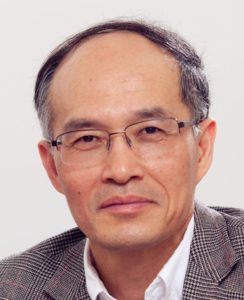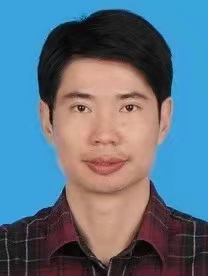For Distinguished Lecturer
- Lectures are meant to be public events and can be given at local IEEE chapters, at universities and companies, high schools, and science fairs.
- The Distinguished Lecturer term is for two years with a possible two-year extension.
- It is expected that each Distinguished Lecturer will: present at least two lectures per year (e.g one keynote at one of our two flagship conferences and at one talk at a local chapter).
- provide one video of the talk to be uploaded in our resource center.

Distinguished Lecturers appointed in April 2023
Aggelos Bletsas
Topic: Batteryless Backscatter Radio for the Masses
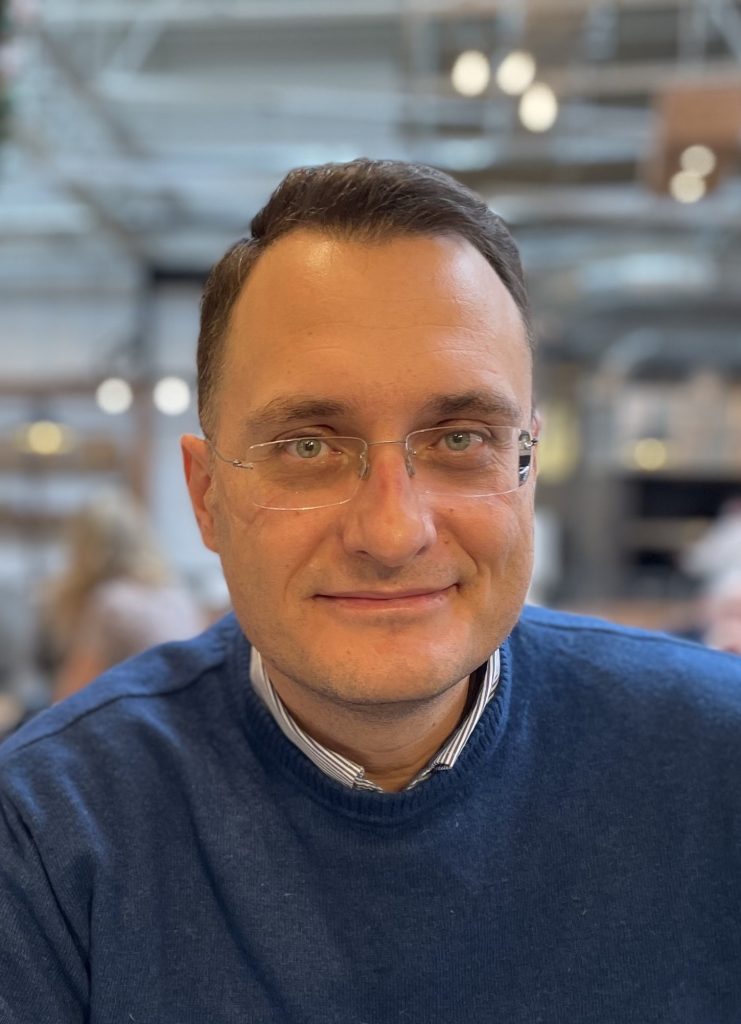
Abstract(s)
Backscatter radio dates back to World War II and lies at the heart of commercial, batteryless radio frequency identification (RFID) tags and technology. This talk will showcase new technology and applications, relevant to backscatter radio and RFIDs, including: a) large-scale but low-cost deployment of Gen2 RFID using commodity software-defined radios, connected over Ethernet, b) precise indoor RFID localization with a mobile robot, c) implementation of a batteryless, RF-powered, reconfigurable intelligent surface (RIS) using commodity RFIDs and finally, d) batteryless, low-cost soil moisture monitoring for precision agriculture using bistatic and ambient backscatter radio. Backscatter radio is grounded on RF reflection principles that simplify communicator design to a single switch, connected to an antenna, offering ultra-low power consumption per tag, at the expense of reduced communication range and coverage. Bistatic or multistatic architectures, where illuminator and receiver of the tag-backscattered information are placed at distant locations, have been proposed to extend range and coverage, compared to conventional monostatic, at the expense of increased (installation) cost. In this talk, a real-time (less than 0.5 msec delay), near-optimal, noncoherent sequence detection technique will be presented, tailored to the Miller line coding of commercial RFIDs and tested, using commercial, off-the-self, software-defined radios (SDR), connected over Ethernet. Experimental results show that doubling the number of transmitting antennas can double indoor coverage, compared to the (commercial) monostatic architecture, allowing for scalable, low-cost RFID interrogation in warehouses and buildings. Work on cm-accuracy RFID tag indoor localization with a mobile robot, will also be shown. Next, design and implementation of a batteryless, RF-powered, reconfigurable intelligent surface (RIS) using RFIDs, will be presented. This is perhaps the first completely wireless RIS in the world (in conjunction with optimal configuration algorithms with loglinear complexity in the number of elements). Finally, the talk will present work on dense, batteryless, low-cost soil moisture monitoring for precision agriculture using bistatic and ambient backscatter radio principles. A patented, low-cost, 30 μWatt batteryless soil moisture sensor, interrogatable by any FM radio-equipped device, will be shown. Cloud services and inference techniques for missing measurements, currently tested from deployment at the island of Crete in Greece, will be discussed.
Bio
Aggelos Bletsas (Senior Member, IEEE) received the Diploma degree (Hons.) in Electrical and Computer Engineering from the Aristotle University of Thessaloniki, Greece, in 1998, and the M.Sc. and Ph.D. degrees in Media Arts & Sciences from the Massachusetts Institute of Technology (MIT), Cambridge, MA, USA, in 2001 and 2005, respectively. He has worked with Mitsubishi Electric Research Laboratories (MERL), Cambridge, MA, USA and the RadioCommunications Laboratory (RCL), Department of Physics, Aristotle University of Thessaloniki, Greece. He currently serves as a Full Professor with the School of Electrical and Computer Engineering, Technical University of Crete, Greece. His research interests span the broad area of scalable wireless communications and sensor networking, with emphasis on ultra-low power/cost environmental sensing, backscatter radio & RFID, wireless localization and ambiently-powered inference networks. His current focus and contributions are relevant to wireless, batteryless, backscatter sensors for precision agriculture that cost a few Euros, consume a few microwatts and can be read with commodity receivers and smartphones. He currently serves as Area Editor, area of Antennas, Channel Models and Location (ACML) of IEEE TRANSACTIONS ON WIRELESS COMMUNICATIONS. He has served as an Associate Editor for IEEE TRANSACTIONS ON WIRELESS COMMUNICATIONS from 2015 to 2021 and IEEE WIRELESS COMMUNICATIONS LETTERS from 2011 to 2016. He has also served as a Technical Program Committee 2 / 2 (TPC) member for major IEEE conferences. He was a co-recipient of the IEEE Communications Society 2008 Marconi Prize Paper Award in Wireless Communications, and various Best (Student) Paper Awards, e.g., in IEEE RFID-TA 2011, IEEE ICASSP 2015, IEEE RFID-TA 2017, MOCAST 2018 and IEEE WCNEE 2021. Prof. Bletsas received the 2012-2013 Technical Univ. of Crete Research Excellence Award. In December 2020, his students won the Second Prize in the 2020 IEEE ComSoc “Communications Technology Changing the World” Student Competition. He is also proud of his students who were winners for two consecutive years of the 2009-2011 and 2011-2012 best Diploma Thesis contest among all Greek Universities on “Advanced Wireless Systems”, awarded by IEEE VTS/AES joint Greek Chapter. He is regularly listed in the Top 2% Scientists worldwide annual list compiled by Prof. Ioannidis’ group at Stanford Univ. and has been included in the Highly Cited Greek Scientists, as well as 45 Highly Cited Greek Scientists under 45 list. One of his articles is ranked 1st in Google Scholar Classic Papers in Computer Networks and Wireless Communication list.
Alice Buffi
2023-2025
Affliliation: Department of Energy, Systems, Territory and Construction Engineering, University of Pisa, Pisa, Italy
Email: alice.buffi@unipi.it
Topic: RFID Position Measurements: the Challenge of Fine-Scale Localization and Tracking
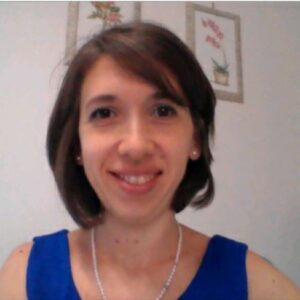
Abstract(s)
During the Fourth Industrial Revolution, the Internet of Things (IoT) and the Industrial IoT (IIOT) together with Automation, Big Data, Artificial Intelligence, Cloud Computing and Autonomous Robots, aim to increase the efficiency and flexibility of production by leading the way of the Fifth Industrial Revolution. The Industry 5.0 changes perspective, by focusing on research and innovation to encourage the development of industry at the service of mankind while respecting the planet resources. In this panorama, the Radio Frequency Identification (RFID) technology with its capabilities of identification, sensing and capability will be still a protagonist. In particular, the possibility to measure the position of workers, items, robots and all industry actors represents an essential functionality in an industrial scenario where man is at the centre. In this speech, the challenge of performing RFID-based localization in industrial scenario will be discussed. The main localization methods will be introduced together with the recent technical advancements, by discussing the trade-offs between system infrastructure and localization accuracy. Examples of practical implementations in real industrial scenarios will be presented by describing also the recent activities on RFID-based localization at the University of Pisa.
Bio
ALICE BUFFI (Senior Member, IEEE) received the B.S. and M.S. (summa cum laude) degrees in Telecommunications Engineering and the Ph.D. degree (Doctor Europaeus) in “Applied electromagnetism in electrical and biomedical engineering, electronics, smart sensors, nanotechnologies”, from the University of Pisa, Pisa, Italy, in 2006, 2008 and 2012, respectively. In 2011, she was a Visiting Ph.D. student with the Queen Mary University of London, London, U.K.. Since 2012, she has been with the University of Pisa, where she is currently an Associate Professor with the Department of Energy, Systems, Territory and Construction Engineering. She has co-authored several international journal papers and international conferences contributions, one European patent and one European patent application. Her current research topics include measurement methods to locate static or moving items through radio frequency identification (RFID) systems operating at the ultra-high-frequency (UHF) band in Industry 4.0 scenarios. Besides, she has interests in classification methods for smart gates and smart storage systems and ageing process in battery cells. Dr. Buffi is a member of the IEEE Instrumentation and Measurement Society, the IEEE Antennas and Propagation Society and of the Council on RFID. She was a recipient of the Best Paper Award at the IEEE RFID-TA 2019 International Conference and of the Young Scientist Award from the International Union of Radio Science, Commission B, in 2013 and 2016. She serves as an Associate Editor for the IEEE Transactions on Instrumentation and Measurement and for the IEEE Journal of Radio Frequency Identification. She also serves as Steering Committee Chair of the IEEE Journal of RFID and as Chair of the IEEE CRFID’s Technical Committee on Motion Capture and Localization (IEEE TC-MoCap).
Aline Eid
Topic: New Backscatter Horizons: The Emergence of mmID Technology
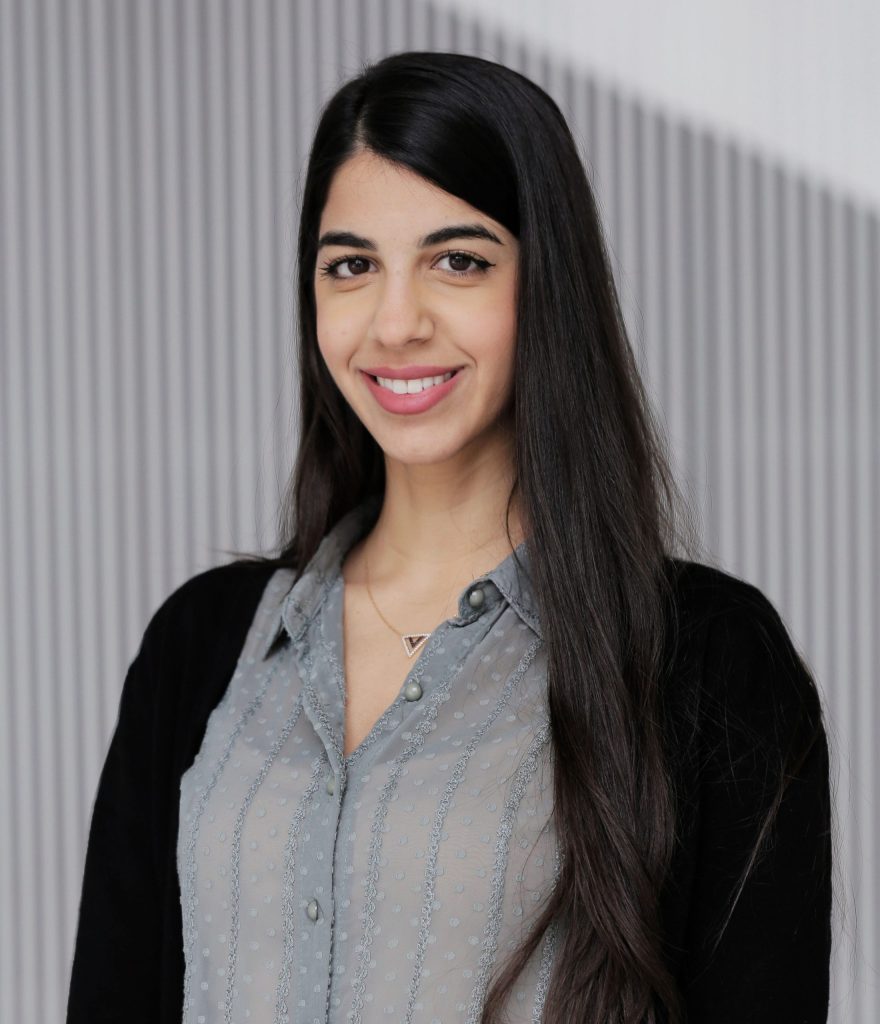
Abstract(s)
The UHF RFID tags that we have become familiar with have come as the fruits of incremental improvements made over 20th-century technology. Stirred by the advent of mm-wave 5G cellular networks and automotive and industrial Radar systems, EdgeComputing, and AI, mm-wave RFID or mmID technology is leaping into the 21st century to offer specifications unattainable to current RTLS and tagging systems. During this talk, Prof. Aline Eid will present breakthrough hardware developments, on the path leading towards the permeation of the physical into the digital, where mmID technology, fully empowered by 5G/mm-waves, will be demonstrated to be the enabler of zero-power longrange sensing and localization for digital twins. This outcome is the product of reported advances allowing the design and demonstration of printed, conformal, and smart wireless devices that can fully-autonomously communicate, at long ranges, and over a wide angular coverage.
Bio
Assistant Professor in the Electrical and Computer Engineering department at the University of Michigan Ann Arbor. She directs the Beam Dynamics group, where our research focuses on wireless sensing, ultra-low power backscatter communications, and wireless power transfer. Prior to joining UoM, She was a Postdoctoral Associate at the MIT Media Lab with the Signal Kinetics group. Aline received her Ph.D. in Electrical and Computer Engineering from the Georgia Institute of Technology (2021), and a Master’s from the American University of Beirut (2017).
Gaetano Marrocco
Topic: Bio-integrated Radio Identification and Sensing: Electronic Epidermal Skins and Cyber Prosthesis for body restoration and augmentation
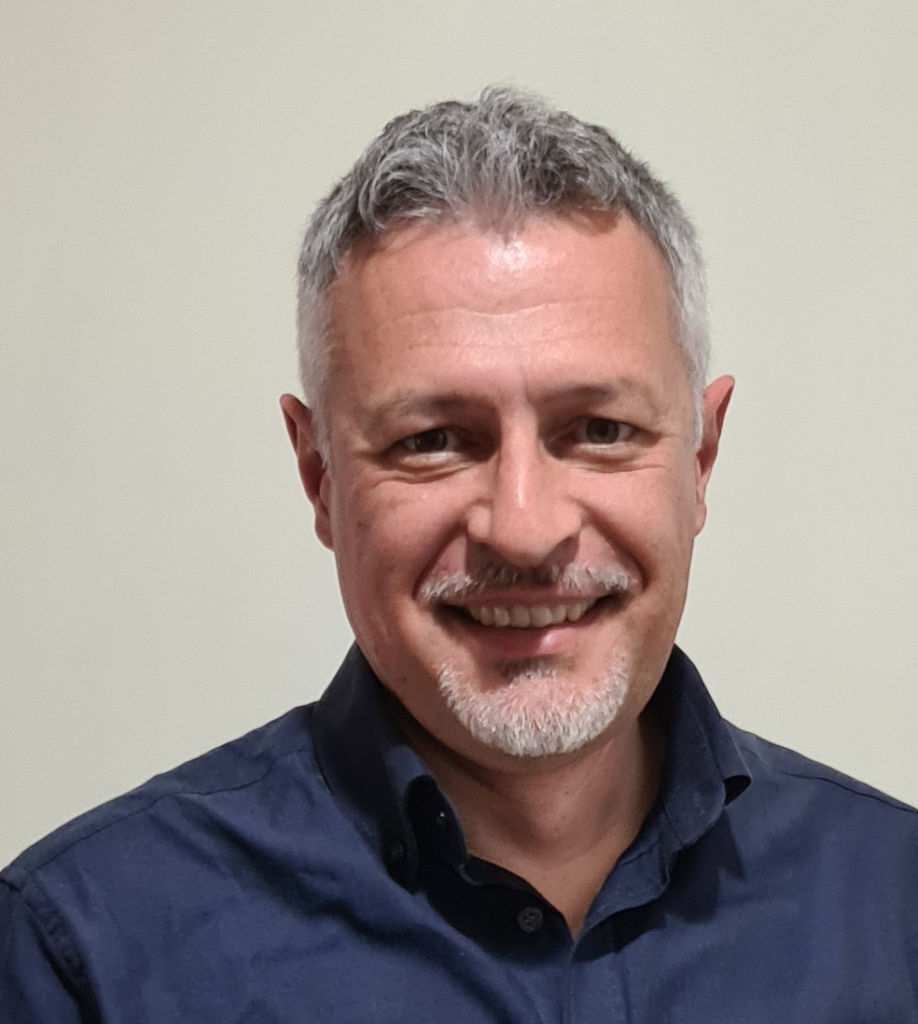
Abstract(s)
coming soon
Bio
Gaetano Marrocco MS in Electronic Engineering and Ph.D. in Applied Electromagnetics from the University of L’Aquila, Italy, in 1994 and 1998, respectively. Researcher at the University of Roma Tor Vergata in 1994-2014. Associate Professor of Electromagnetics in 2013-2017, Full Professor at the University of Roma Tor Vergata since 2018. He currently serves as Director of the Medical Engineering School. The first phase of his career was devoted to the research on Time-Domain electromagnetics with application to structural, broadband, and ultra-wideband antennas for Satellite (ESA, ASI), Avionic, and Naval (Leonardo) communications. Then, since 2002 he is investigating sensor-oriented miniaturized antennas for Biomedical Engineering and Radiofrequency Identification (RFID), contributing to the move from the RF labeling of objects to the passive sensor networks in the Internet of Things era. He carried out pioneering research on bodycentric battery-less wireless sensors concerning textile RFID antennas, tattoo-like sensors (flexible and stretchable epidermal electronics), and radio-sensors embedded inside implanted prostheses. He served foe many years as Associate Editor for the IEEE Journal of Radiofrequency Identification, as member of the IEEE Antennas and Propagation Society Awards committee, and currently he is AE of the IEEE Journal of Flexible Electronics. Moreover, he is the chair of the Italian delegation URSI Commission D Electronics and Photonics. He was the chair of the Local Committee of the V European Conference on Antennas and Propagation (EUCAP-2011), TPC chair of the 2012 IEEE-RFID TA in Nice, France, TPC track-chair of the 2016 IEEE Antennas and Propagation Int. Symposium, TPC track-chair of IEEE-RFID 2018-22, USA and co-chair of the 2024 IEEE FLEPS in Finland. Prof. Marrocco is the director of the Pervasive Electromagnetics Lab (www.pervasive.ing.uniroma2.it) and the co-founder and president of the University spin-off RADIO6ENSE (www.radio6ense.com), which is active in the short-range electromagnetic sensing for the Industrial Internet of Things, Smart Manufacturing, Automotive and Medical Device. He is listed in the PLOS ranking of Top 2% Scientists Worldwide (source Univ. Stanford, 2023).
John Greaves
Topic: Blockchain and RFID: Future Proofing Your RFID Value
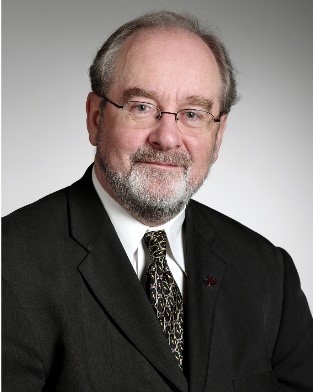
Abstract(s)
This presentation will clearly illustrate the direction of RFID implementation towards Digital Twins and the increased relevance of ensuring that RFID is not a unique or unaligned IT investment. Initiatives such as DFM, Digital Freight Matching, with the implication towards item level on board and delivered asset accountability, the recognition that Blockchain, like RFID, is valuable on it’s own not just some afterthought is a scenario emerging in Blockchain just as it came to and was dealt with in RFID before the acceptance of RFID technology became mainstream (ish). Those active in RFID, and those considering crossing the Rubicon (a very Italian concept) into RFID need this presentation as a roadmap on how to gain maximum yield from the investment and support further advances in to data harvesting for value return.
Bio
coming soon
Smail Tedjini
Topic: Combining Conventional RFID and Chipless Technologies, the next RFID Frontier
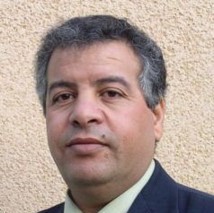
Abstract(s)
coming soon
Bio
Smail TEDJINI, received the master in electrical engineering in 1979 from Grenoble University, the Doctorat 3rd cycle in Microwave in 1982 from Grenoble Institute of Technology and Doctor d’Etat in Physics from Grenoble University in 1985. He was Assistant Professor at the Electronics Dpt. of Grenoble Institute of Technology (Grenoble-inp) from 1981 to 1986, and Senior Researcher for the CNRS (Research French National Center) from 1986 to 1993. He became University Full Professor in 1993 and since 1996 he is Professor at the esisar, Embedded Systems Dpt. of Grenoble-inp. His main teaching topics concern Applied Electromagnetism, RadioFrequency, Wireless Systems and Optoelectronics. Now he has nearly 40 years experience in academic education, Research and management of university affairs. He served as coordinator and staff member in numerous academic programs both for education and research. He was coordinator for Ph.D. program, Master and Bachelor programs for the Universities at Grenoble, some of these programs were under collaboration with international universities from Europe, Canada, Brazil, Vietnam, Egypt, Maghreb … He served as the Director of esisar, Dpt. of Grenoble-inp. He is involved in academic research supervision since 1982. His main topics in research are applied electromagnetism, modeling of devices and circuits at both RF and optoelectronic domains. Current research focus on wireless systems with special attention to RFID technology & its applications. He is the founder in 1996 and past Director of the LCIS Lab. Now, he is project manager within ORSYS group that he leaded until 2014 and founded 25 years ago. He supervised nearly 50 PhD and he has more than 350 publications and . He served as Examiner/reviewer/opponent for tens of Ph.D. degrees for universities in many countries (France, Germany, Finland, Spain, Ireland, Italy, Sweden, Vietnam, Australia, Singapore, India, Brazil, Egypt, Maghreb…). He supervised tens of research contracts with public administrations and industries. He is Member of several TPC and serves as expert/reviewer for national and international scientific committees and conferences including journals such as Piers, IEEE (MTT, AP, Sensors, MGWL, JRFID, Access), IET, Piers, MDPI, URSI, He served as project expert for French and international research programs (ISO, ANR, OSEO, European Programs, FNQRT, CNPQ…). He organized several conferences/workshops/Summer Schools and was TPC chair/co-chair in numerous conferences: IEEE, URSI, EuCAP, EuMW. He the TPC chair of IEEE-RFID 2019 and was the General Chair of IEEE RFID-TA 2012. Life Fellow Member IEEE and URSI Fellow, Past President and founder of the IEEE-CPMT French Chapter, Vice-President of IEEE Section France (2008-2014). He was elected as the Vice-Chair of URSI Commission D “Electronics & Photonics” in 2008. He served as the Chair of URSI Commission “D” for the triennium 2011-2014. In 2014-2017 he was President of URSI-France. 2017-2019 he was vice chair of IEEE MTT-TC 24, 2020-2021 he served as chair of IEEE.
Ultan McCarthy
2023-2025
Affliliation: Waterford Institute of Technology, Co. Waterford, Ireland
Email: Ultan.McCarthy@setu.ie
Topic: The Electronic Transformation of AgriFood Systems
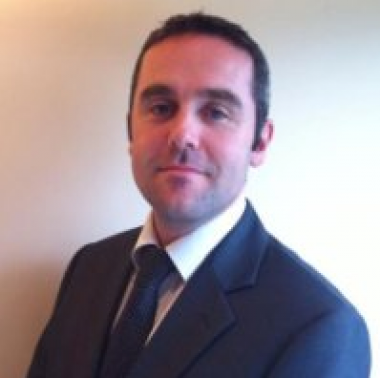
Abstract(s)
The technical focus of the lectures will primarily be on the adaptation and deployment of Electronics to Agriculture and Food Sectors. The proposed lecture series will aim to adopt a technical and application focus. It will aim to answer questions including but not limited to (1) how and where are electronics currently deployed into the global AgriFood sector and (2) where is the value add being realised within each sector. (3) It will focus on the suitability of the technology and also present (where possible) a challenges encountered section. This will allow the audience to get a perspective of the current and future needs of the sector with respect to electronics deployment and also demonstrate value adding applications as well as future needs of electronics within the sector
Bio
Ultan Mc Carthy Ph.D, MBA:
Experienced professional with a proven history of achievements in innovation management, commercialising research, technology development and project management. Strong academic background accompanied by 10 + years experience in a leadership and management capacity with a proven track record in securing national, European and international public and private funding. Former centre manager of Irelands national Mechatronic and RFID competency center – IMaR. IMaR is one of twelve Enterprise Ireland’s Technology Gateway Centres designed to deliver innovative applied research solutions to national and international industry focusing on Intelligent Mechatronics, Radio Frequency Identification Technology (RFID) and the Internet of Things (IOT). Current research focuses on the digitisation of the agri food supply chain to improve efficiency, increase transparency and reduce waste. The deployment of these digital systems also improve flexibility of systems and assist in promoting resilience and sustainability across global agri-food supply chains Personal competencies are built on international experience in combination with academic qualifications including a BSc in Food Technology from University College Cork an MSc in Engineering Technology, a PhD in Biosystems Engineering from University College Dublin, and an MBA degree. This has resulted in significant peer reviewed publications, book chapters, technical documents, white papers, numerous national and international conference publications and a significant international research portfolio.
Will Whittow
Topic: 3D Printed Antennas, Metamaterials, and Metasurfaces for Microwave Applications
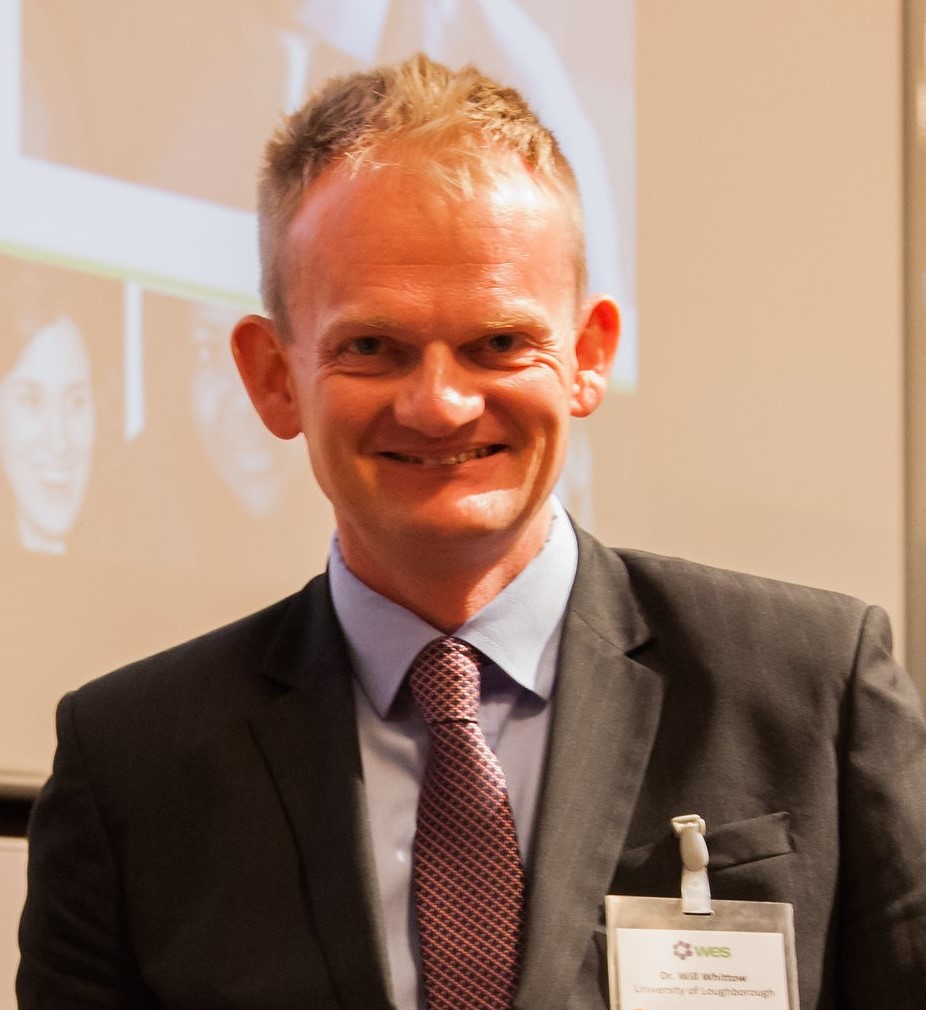
Abstract(s)
My research relates to radiofrequency materials which encapsulates altering the dielectric properties and internal / external shape to design novel antennas, filters, and metamaterials. I have been working in this area for more than a decade and recently led a large multi-institution project on this topic. 3D printing not only allows control of the external shape, the local relative permittivity can be tailored to precise specifications by controlling the internal geometry and hence varying the ratio of air and filament. The local relative permittivity can then be graded in all three axes for extra degrees of freedom. This can be exploited to create flat grade index lenses as well as hybrid lenses. By using specialist printers and careful control of the settings, filaments with relative permittivities up to 15 can be printed. Ceramics can be used for ultra-low loss materials. The talk will demonstrate how these RF materials can be used to create artificial dielectrics, filters, metamaterials, and bespoke antennas. The talk will also cover the challenges of measuring dielectric properties. We have recently developed a bespoke system to measure the properties of anisotropic and (dia)magnetic materials. In addition, we will discuss inkjet printing including on curved surfaces; RFID tags; metasurfaces, intelligent reconfigurable surfaces; and sensing for Bioelectromagnetics in Healthcare.
Bio
coming soon

